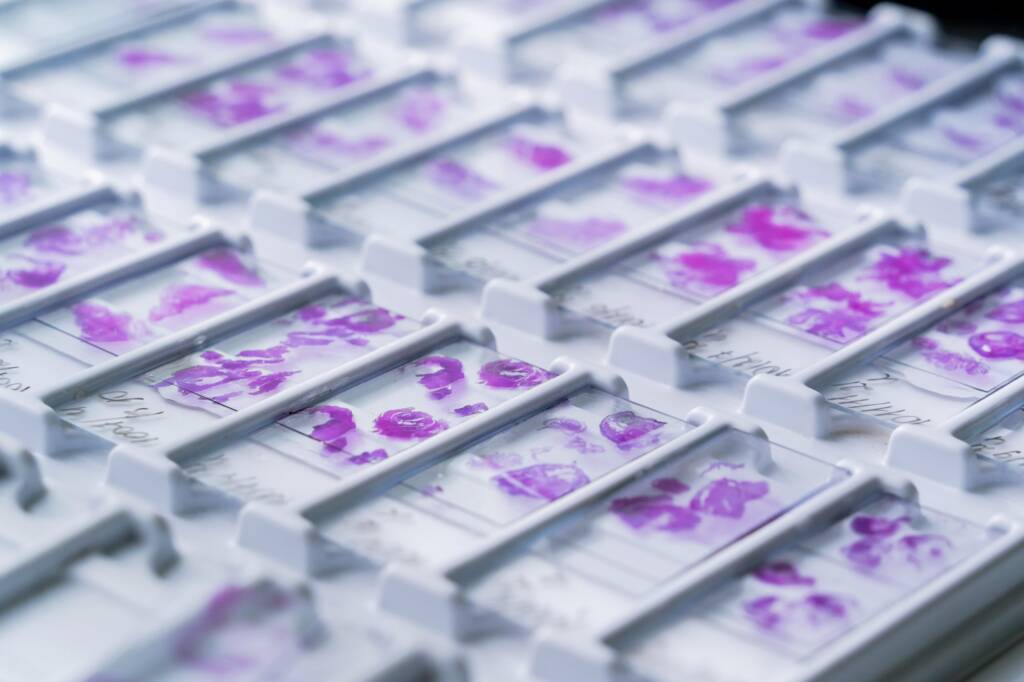In this new digital age, digital pathology is revolutionizing the field of histopathology. By accelerating the diagnostic process and empowering histopathology professionals with advanced tools and capabilities, digital pathology has brought significant advancements to the field of histopathology. In this blog, you will get a detailed insight into how digital pathology solutions help accelerate diagnostics and empower histopathology professionals.
Overview of Digital Pathology
The digital pathology process introduces a new paradigm in pathology by leveraging automation, digital imaging, and AI technologies. It addresses the limitations of the standard process, such as error rates, manual handling, and the potential for diagnostic inaccuracies, by providing a streamlined, efficient, and data-rich environment.
By embracing digital pathology, histopathologists can provide better quality care, drive progress in the field, and ultimately improve patient outcomes.
Digital Pathology: Revolutionizing Diagnostics
Digital Pathology includes several key components that work together to enable the digitization, management, and analysis of pathology specimens. Some of the key components of Digital Pathology are:
1. Whole Slide Imaging (WSI)
Whole slide imaging involves scanning a glass slide containing a tissue sample to create a high-resolution digital image.
WSI captures the entire slide at various magnifications, preserving all the fine details of the specimen.
These digital images serve as the foundation for digital pathology, enabling remote viewing, analysis, and sharing.
2. Workflow Management
One of the key components of the digital pathology infrastructure, lab management software plays a key role in streamlining the process of ordering and tracking laboratory tests for pathology specimens, handle patients and medical records.
This software facilitates electronic ordering and management of laboratory tests and procedures as part of a digital pathology workflow.
3. Digital Slide Management Systems
Digital slide management systems provide a centralized platform for storing, organizing, and managing digital slides.
These systems facilitate secure storage, retrieval, and sharing of digital slides, making them easily accessible to pathologists and other medical professionals involved in the diagnostic process.
Digital slide management systems are often integrated with other components such as image analysis and collaboration tools.
4. Image Analysis Software
Image analysis software enables automated analysis of digital slides to extract quantitative data and identify specific features and patterns within tissue samples.
These software applications use algorithms and machine learning techniques to detect and quantify biomarkers, identify cellular structures, and analyze morphological properties.
Image analysis software improves the efficiency, accuracy, and standardization of pathology analysis.
5. Collaboration and Teleconsultation Tools
Collaboration and remote consultation tools facilitate remote communication and collaboration between pathologists and other medical professionals.
These tools enable real-time discussions, digital slide sharing, and remote viewing of cases.
Collaboration tools enable pathologists to obtain expert opinions, participate in multidisciplinary team discussions, and provide remote consultation services, regardless of geographic location.
How Digital Pathology Empowering Histopathology Professionals in the Digital Era
Digital Pathology empowers histopathologists in the digital age by providing them with advanced tools, increased efficiency, enhanced collaboration, and access to comprehensive patient data. Here are some ways digital pathology can empower histopathology professionals.
1. Enhanced Diagnostic Accuracy
Digital pathology provides high-resolution imaging and image analysis tools that help identify and evaluate cellular structures, biomarker expression, and morphological patterns.
These tools provide quantitative data and objective measurements, thus reducing subjectivity and increasing diagnostic accuracy.
2. Improved Efficiency and Productivity
Digital Pathology streamlines workflow by eliminating physical slide handling and enabling remote access to digital slides. Pathologists can review cases from anywhere, reducing turnaround time and increasing productivity.
Automated image analysis tools reduce manual evaluation time and further improve efficiency.
3. Remote Collaboration And Consultation
Digital pathology enables histopathologists to collaborate and consult with colleagues and experts remotely. It lets them share digital slides, discuss cases in real time, and get second opinions and multidisciplinary consultations.
This collaboration facilitates knowledge sharing and improves diagnostic outcomes.
4. Integration with Comprehensive Patient Data
Digital pathology systems can be integrated with electronic health records (EHRs) and other clinical data systems, giving histopathologists access to patient information in addition to digital slides.
Integration with clinical data improves understanding of patient history, test results, and radiographic images to support informed diagnosis and treatment decisions.
5. Continuous Education and Professional Development
Digital Pathology Platform provides educational resources and opportunities for continuous learning. Histopathology professionals can access virtual slide libraries, interactive modules, and online platforms to learn at their own pace and improve their skills.
Digital tools facilitate the exchange of educational materials, case studies, and research findings, supporting ongoing professional development.
6. Research and Innovation
Digital pathology contributes to research and innovation in histopathology. It enables integration with genomics and other molecular analyses, facilitating research into disease mechanisms, predictive models, and personalized medicine.
Histopathology professionals can actively contribute to scientific discoveries, clinical trials, and the development of new diagnostic and therapeutic approaches.
Conclusion:
The digital transformation in histopathology brings forth a significant emphasis on empowering histopathology professionals. Through the adoption of digital technologies and innovative digital pathology solutions, histopathologists can enhance their diagnostic capabilities, decision-making ability, and overall contribution to patient care in the digital era.


